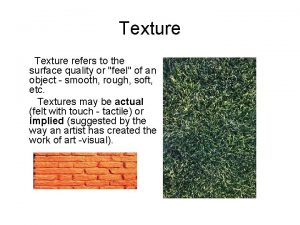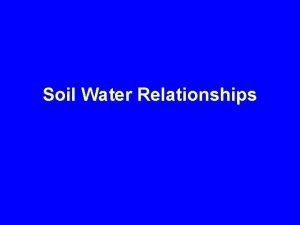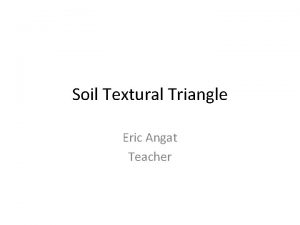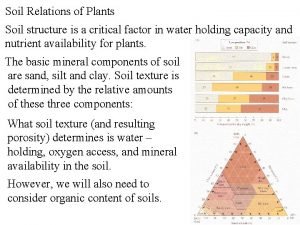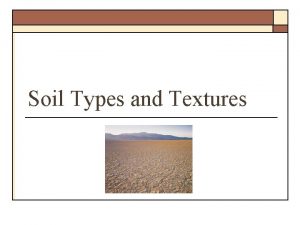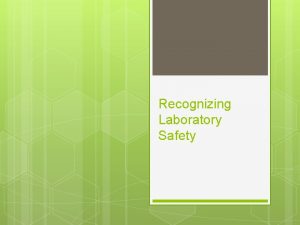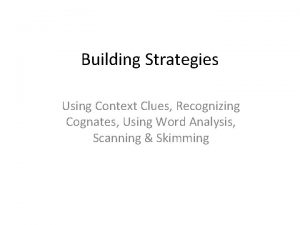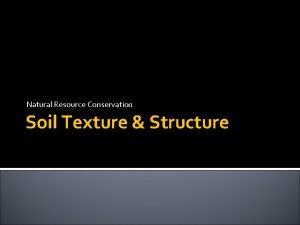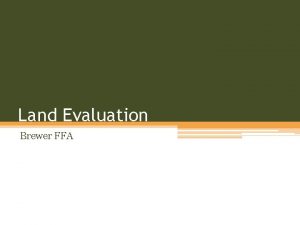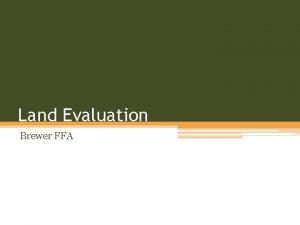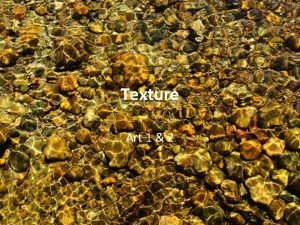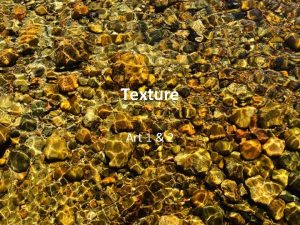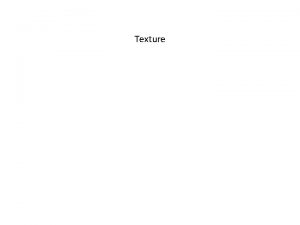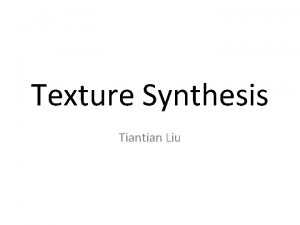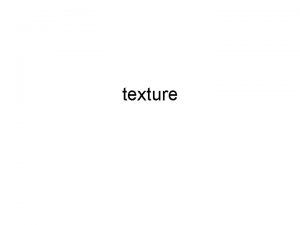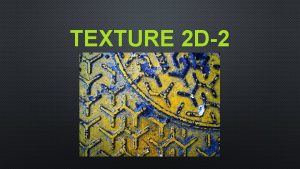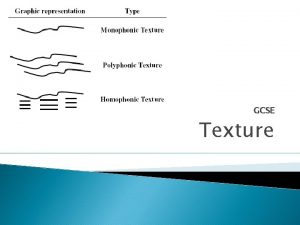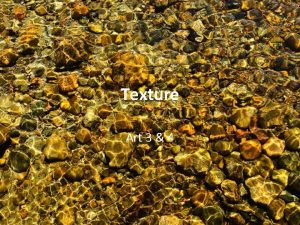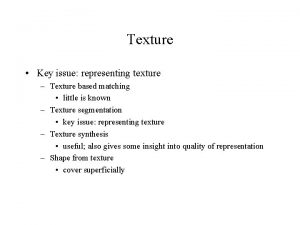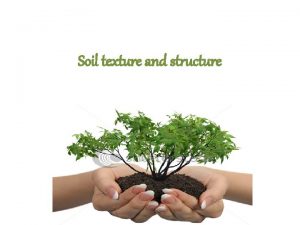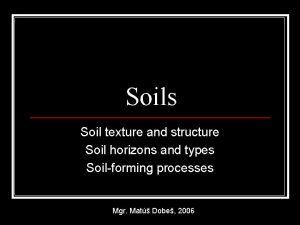Recognizing Soil Texture Structure 1 2 Soil Texture





















- Slides: 21

Recognizing Soil Texture & Structure 1

2

Soil Texture Soil texture = proportions of sand, silt and clay ► Property of the soil controlled by the size of individual grains or particles ► Soil is usually made up of particles of widely varying sizes. ► Soil texture expresses the average or combined effect of all these grain sizes ► 3

3 Soil Textures Sand ► Silt ► Clay ► 4

Feel that soil! ► ► ► Sand: In the moist condition sand should feel gritty and will be loose and single grained. Squeezed when wet, it will fall apart when the pressure is released Clay: when moist is quite plastic and sticky when wet. When the moist soil is squeezed out between the thumb and fore finger, it will form long flexible ribbons. Silty Soil: when dry and pulverized will feel soft and floury. When wet the soil readily runs together and puddles. When squeezed between the thumb and finger it will ribbon but the ribbon will appear checked and cracked. 5

6

Fine Textured Soils ► Clay ► Sandy Clay ► Clay Loam ► Silty Clay Loam 7

Medium Textured Soils ► Sandy Clay Loam ► Silt 8

Coarse Soils ► Sand ► Loamy Sand ► Sandy Loam 9

Soil Structure the combination or arrangement of primary soil particles into secondary particles, units, or peds (which are separated from adjourning aggregates by surfaces of weakness) 10

Soil Aggregation The cementing or binding together of several soil particles into a secondary unit, aggregate, or granule **clods are different – they are caused by some disturbance such as plowing or digging 11

Consistence The resistance of a material of deformation or rupture – the degree of cohesion or adhesion of the soil mass 12

Structureless soil Soil where the particles of coarse soil fail to cling together, when fine soil breaks into large clods, or when the soil is massive, a single compacted substance 13

Platy Structure Soil aggregates developed along the horizontal direction: flaky 14

Prismatic Structure A soil structure type with a long vertical axis that is prism shaped, vertical faces are well defined, without rounded caps 15

Columnar Structure Vertically oriented, round-topped structural prisms – rounded caps 16

Granular Structure A natural soil ped or aggregate – have plane or curved surfaces which have slight or no accommodation to the faces of surrounding peds 17

Types of Soil Structure ► ► ► ► Platy Prismatic Columnar Angular Blocky: Block-like – three dimensions of same magnitude Subangular blocky: same as angular except the vertices are more rounded Granular Crumb: similar to granular except the peds are porous 18

Class of Structure Size of individual ped 19

Good Soil Structure ► ► ► ► Good Soil Structure: Necessary for good water penetration into the soil Water holding capacity Ease of working the soil Good root penetration Favorable movement of soil air Availability of plant nutrients Good internal drainage 20

Binding Agent in the soil ► Organic matter converted to humus is the chief binding agent for stable soil structure. ► Continuous cultivation and never plowing under any organic matter tends to destroy structure 21
 Identifying and correcting faulty sentences
Identifying and correcting faulty sentences Refers to the surface quality
Refers to the surface quality How is soil made
How is soil made Soil infiltration rate
Soil infiltration rate The soil textural triangle
The soil textural triangle Soil texture water holding capacity
Soil texture water holding capacity Soil texture definition
Soil texture definition Apes soil texture triangle activity answers
Apes soil texture triangle activity answers Living soil vs dead soil
Living soil vs dead soil What are the four spheres of the earth
What are the four spheres of the earth Materials useful
Materials useful Drawing inferences listening strategy
Drawing inferences listening strategy Recognizing opportunity
Recognizing opportunity Recognizing opportunities and generating ideas
Recognizing opportunities and generating ideas Recognizing genre - argumentative text
Recognizing genre - argumentative text Speak about variables affecting channel structure?
Speak about variables affecting channel structure? Recognizing opportunities and generating ideas
Recognizing opportunities and generating ideas Recognizing lab safety worksheet answers
Recognizing lab safety worksheet answers Chapter 3 recognizing opportunity
Chapter 3 recognizing opportunity An opportunity has four essential qualities it is
An opportunity has four essential qualities it is Strategy: recognizing cognates
Strategy: recognizing cognates Argumentative essay genre
Argumentative essay genre

